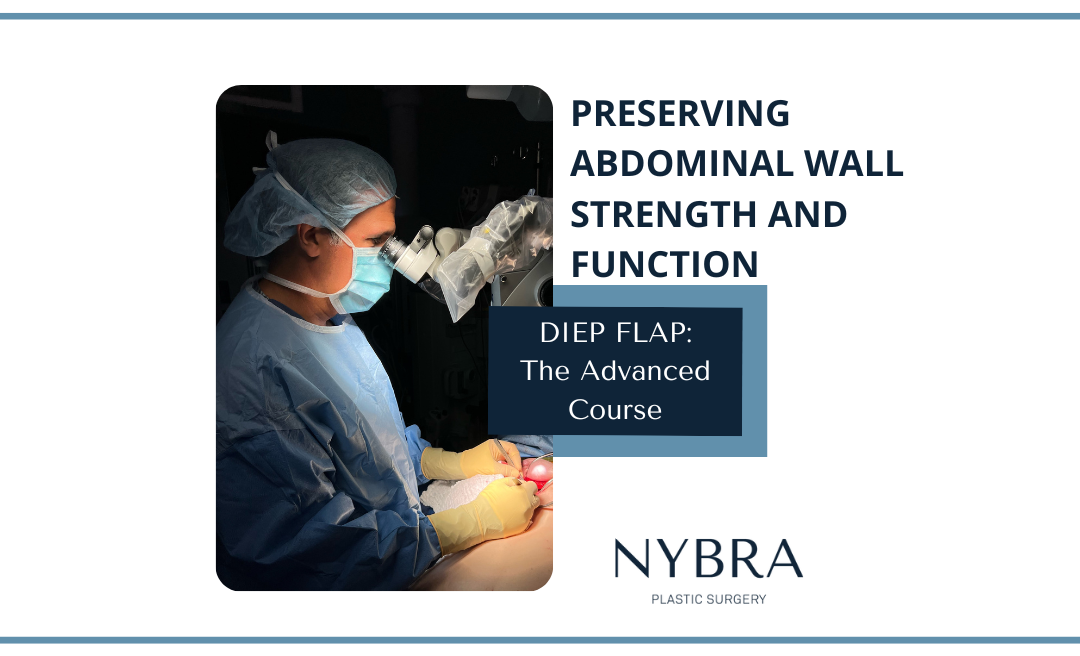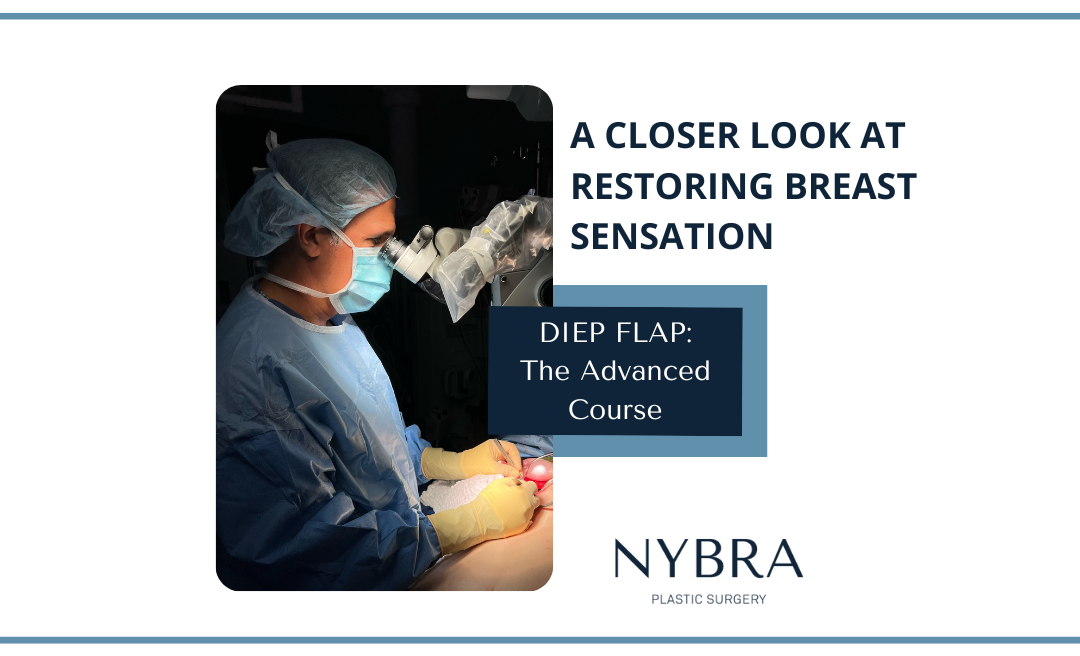Preserving Abdominal Wall Strength and Function with DIEP Flap Breast Reconstruction
August 22, 2022
In the first installment of DIEP Flap: the Advanced Course, we talked about restoring breast sensation. This time, we are going to delve into donor site function. Natural tissue breast reconstruction involves multiple areas of the body. While it is important that the reconstructed breast looks and feels as natural and comfortable as possible, it is just as important to tend to the site from which the reconstructed breast tissue came.
The Deep Inferior Epigastric Perforator flap evolved from TRAM and Muscle Sparing TRAM flaps. The advantage of DIEP flaps is they preserve the rectus abdominis muscle (six pack muscle) in the abdomen, whereas TRAM and Muscle Sparing TRAM flaps cut all or some of the rectus muscle. By cutting the rectus muscle, TRAM flaps weaken the abdominal wall, which can result in abdominal bulges or limit even simple activities like sitting up.
Although it is critical to preserve the rectus muscle, that technical shift alone is not actually enough to maintain abdominal wall strength. Muscles need to be innervated by nerves. During a DIEP flap procedure, the muscle is split in the direction of the muscle fibers so that the muscle is not cut. However, the nerves that innervate and nourish the muscle travel from the outer side of the muscle towards the midline. This means that they cross the muscle fibers. It is critical that these nerves are preserved while the DIEP flap is elevated in order to preserve a healthy, functional rectus muscle and the abdominal strength it provides.
Sometimes, the nerves traveling to the muscle take a course in between the perforating vessels entering the flap. This essentially traps the nerve. In this situation, the microsurgeon has two choices: they can cut the nerve and repair the nerve, or they can cut the blood vessels and repair the vessels. Either option is effective. The key is that the surgeon makes a decision and completes the repair. Under no circumstances should a surgeon choose to cut the nerves and neglect to repair them.
Preserving the nerves to the rectus muscle is a crucial step in a successful DIEP flap that produces not only a warm, soft, natural breast reconstruction, but also a flat, functional, and improved abdominal contour. If you are considering a DIEP flap reconstruction for either an immediate or delayed reconstruction, be sure to ask your surgeon about how they plan to preserve the motor nerves to your rectus muscle.
A Closer Look at Restoring Breast Sensation
Breast reconstruction was once simply a matter of preserving or reconstructing a patient’s nipple and areola and creating a soft, natural breast. Advances in modern…
